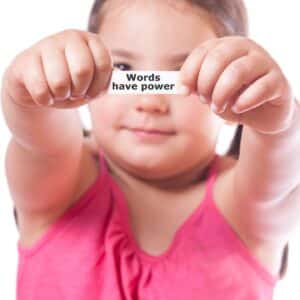As parents, we are always keen on understanding every aspect of our child’s development, especially when it pertains to communication. One crucial component of language development is syntax. But what is syntax, and how does it develop? Let’s dive into the world of syntax and learn how we can support our children in developing it.
Understanding Syntax
Syntax refers to the arrangement of words and phrases to create well-formed ideas and sentences in a particular language. It’s the set of rules that dictate how words and phrases relate to each other and are organized. This allows us to convey clear and specific meanings when we communicate.

The Importance of Syntax in Communication Development
Syntax provides a structured way to express our thoughts and emotions. Here’s why it’s crucial:
- Clarity: With correct syntax, the listener can understand the speaker’s intent without ambiguity.
- Cohesion: It gives a logical structure to sentences, making conversations flow smoothly.
- Complexity: As children grow, they express more complex thoughts, and syntax helps in elaborating and expanding their ideas.
Syntax in Child Development
How Children Acquire Syntax
Children aren’t born with an understanding of syntax. They acquire it overtime through:
- Observation: From infancy, children are learning the patterns of the language or languages used around them.
- Experimentation and Practice: Toddlers often experiment with and practice sentence structures, sometimes leading to endearing errors like “Me want cookie.” No need for alarm, this is how learning happens.
- Modeling, Imitation and Repetition: Over time, modeling, imitation, repetition and feedback from adults and peers helps children refine their understanding of correct syntax.
Demonstrating Syntax
Examples of syntax demonstrated by children include:
- Moving from two-word utterances like “big truck” to more complex structures like “The big truck is noisy.”
- Asking questions: Instead of just stating “cookie”, they might ask, “Can I have a cookie?”
Challenges Faced Due to Delayed Syntax Development
If a child’s syntax skills are delayed or disordered:
- They might struggle to express themselves.
- They may face difficulties understanding the phrases and sentences of others, answering questions, and following instructions.
- Challenges expressing ideas and being understood could lead to frustration and behavioral challenges.
Supporting Your Child’s Syntax Development
Strategies for Parents
- Narrate Daily Activities: Talk through or model language associated with what you and your child are doing, e.g., “I am washing the dishes.”
- Share Books and Read Together: Reading exposes children many sentence structures.
- Play with Sentence Structure: Mix and match phrases with your child to see how sentences change in meaning.
- Correct Mistakes Gently: Instead of pointing out errors, model the correct syntax, e.g., if they say, “Him go store,” you can respond, “Yes, he went to the store.” Hearing your model supports their learning.
- Use Visuals: Expose your child to print and point to the words in written phrases and sentences. Use signs, pictures and/or word cues to support their phrase and sentence use.
FAQs
- When do children start developing syntax skills?
- Infants begin absorbing language patterns from birth, but active syntax use typically starts around the age of two-year-old.
- My child often makes syntax errors. Should I be concerned?
- Errors are normal. However, if errors persist beyond the range expected for their age, consider consulting a speech-language pathologist.
- Are bilingual children at a disadvantage with syntax development?
- Bilingual children might mix structures from different languages, but this doesn’t indicate a disorder.
- Does reading to my child help with syntax development?
- Absolutely! Reading exposes children to a variety of simple and complex sentence structures.
- Can TV shows or apps help in improving syntax?
- While real-life interaction is best, some educational shows and apps can reinforce syntax skills.
Additional Resources
- Parent Tip Sheet-Language Syntax & Morphology
- Syntax – Literacy How
- Communication Milestones: Age Ranges (asha.org)
Summary/Conclusion
Syntax, though a seemingly complex term, is a fundamental part of our daily communication. By understanding its components, development, nuances and importance, parents can better support their child’s syntax and overall language development, paving the way for more effective communication.




0 Comments